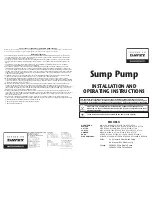
11
OPERATING INSTRUCTIONS
6. Operating with the Ratchet Wrench
WARNING
• Battery tools are always in operating condition. Therefore, always remove the battery pack
when the tool is not in use or when carrying it at your side.
The proper fastening torque may differ, depending on the type or size of the bolt, the material
of the workpiece to be fastened, etc. Before starting your job, always perform a test operation
to determine the proper fastening
time for your bolt or nut.
a. Check the forward/reverse selector (B) for the correct directional setting (forward or
reverse).
b. Hold the tool firmly and place the socket over the bolt or nut.
c. Depress the variable-speed trigger switch (D) to turn the ratchet wrench on. The variable-
speed trigger switch delivers higher speed with increased trigger pressure and lower
speed with decreased trigger pressure.
d. Fasten the bolt or nut to the proper torque.
e. To turn the wrench OFF, release the trigger switch.
f. After fastening, always check the torque with a torque wrench.
NOTICE:
Hold the tool straight along the axis of the bolt or nut.
Loosening Fasteners
The torque that is required to loosen a fastener averages 75% to 80% of the tightening torque,
depending on the condition of the contacting surfaces. However, if rust or corrosion causes
seizing, more torque may be required.










































